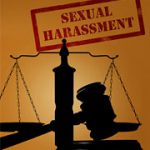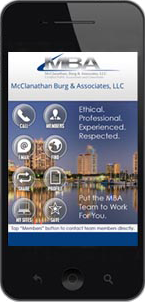Minimize Risk of Sexual Harassment Claims in Your Workplace

Although it might be impossible to guarantee that sexual harassment will never happen at your company, you can demonstrate that it won’t be tolerated. Doing so will go a long way toward reining in the prospect that it will occur, and also in reassuring potential victims that you don’t take the matter lightly. Should an incident take place, the affected employee, and probably many who hear about it, will see it as an aberration, and not “business as usual.”
The Equal Employment Opportunity Commission (EEOC) points out that the scope of sexual harassment isn’t limited to “unwelcome sexual advances,” but includes “offensive remarks about a person’s sex,” such as by making insulting comments about men or women in general. Also, the genders of the victim or the harasser can come in any combination. In fact, 17% of the cases filed with the EEOC last year were filed by men, including those involving other men.
Crossing the Line
So when does boorish behavior step over the line and become illegal? According to the EEOC, the law “doesn’t prohibit simple teasing, offhand comments, or isolated incidents that are not very serious.” Where such behavior goes too far is “when it is so frequent or severe that it creates a hostile or offensive work environment, or when it results in an adverse employment decision, such as the victim being fired or demoted.”
The harasser can be anyone at the company, not just a supervisor. Even a client or customer of the company can be a harasser, though the victim would have to show that certain conditions were present. That is, there would have to be evidence that the employer knew about the behavior, did nothing to stop it and that the victim had no way to avoid contact with the customer.
This isn’t to suggest that an employee has a blank check to file a charge. In fact, before a charge is filed, the EEOC suggests, “it is helpful for the victim to inform the harasser directly that the conduct is unwelcome and must stop.” That reduces the chance that a simple misunderstanding has become overblown.
More EEOC Recommendations
The number one admonition from the EEOC to employers is to ensure that plenty of resources and staff time are allocated to a harassment prevention effort. This includes assessing the risk factors that are present within the workforce, and then taking steps to minimize those risks.
Here’s a partial rundown on what the EEOC encourages employers to do, once resources are in place. An effective harassment prevention effort should include the following measures:
- A written anti-harassment policy using language that’s easy to understand and communicate to all employees. It should include an “unequivocal statement that harassment will not be tolerated,” and should feature a clear description of prohibited conduct, with examples.
- A reporting system that employees are aware of, which can be used to accept statements about harassment experienced and harassment observed, preferably with more than one way to submit information. Employees should feel confident that a report will lead to a thorough and impartial investigation.
- Imposition of discipline that’s prompt, consistent and proportionate to the harassment, assuming it’s determined that harassment did occur.
- Accountability and training for mid-level managers and front-line supervisors to prevent and respond to workplace harassment
- Regular compliance training for all employees so they can recognize prohibited forms of conduct and know how to use the reporting system,
- A firm statement that retaliation won’t be tolerated.
Follow-Up
Here are a few follow-up steps you might take, if you’re willing to go the extra mile to prevent a sexual harassment problem in the future:
- Conduct periodic “climate surveys” to assess the extent to which harassment is occurring,
- Implement a method to measure how effective supervisors are in preventing and responding to harassment, and include it in their performance reviews,
- Conduct “workplace civility” and “bystander intervention” training, and
- Partner with researchers to evaluate the organization’s overall workplace harassment prevention effort.
Remember, sexual harassment isn’t just a problem for the direct victim, but can have negative ripple effects throughout the organization. A sexual harassment consulting and training industry has been helping employers try to address this issue for many years, and the EEOC’s own website has a great deal of practical advice on the matter. It might be prudent to take a fresh look at your policies and procedures in this area to be confident they’re robust enough to minimize the probability of any problem behavior.




